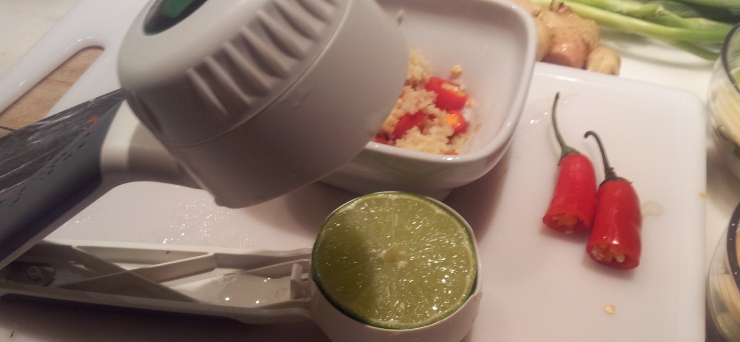-
Lime Interesting Facts from The CitrusTwist lime Juicer
11 comments
Lime Facts and Information
-
CitrusTwist - The first of many, more to come.
9 comments
Perfect for anyone that enjoys cooking with Asian flavours or kicking back with a vodka, lime and soda. A great gift for friends that enjoy food and drink and already have everything.....
The CitrusTwist - No mess. No fuss. Minimum effort.
The Citrus Twist is easy to use, easy to clean.. .
Read More
Botanical Name :: Citrusaurantifolia
Indian Name :: Niboo
Description
The lime is an important fruit of citrus
group. It is very popular all through the tropics and is used as a
necessary adjunct in everyday meal. It is regarded as a
health-building food of great value. Limes are generally mistaken
for lemons, but they represent two varieties of the same genus.
The lime is smaller in size than the lemon, with a thin smooth
skin. It has sweet smell and contains less juice than the lemon.
The lime grows on a small, multi-branched tree up to 5 me. in
height, with spiny branches, small green leaves and white and
strongly scented flowers.
There are many varieties of limes,
differing in size, color and shape. They are, however, classified
into two main groups, namely, the sweet and the acid limes. The
sweet limes contain a. higher proportion of sugar but they have an
insipid taste and are not considered to be of high nutritive
value. They are, therefore, not grown on any great scale. Acid or
sour limes, on the other hand, are extensively cultivated as their
importance as food and medicine has been recognized for centuries.
The two most popularly known varieties are Pari and Kagzi niboo
The lime is believed to have originated in
India, where it has been grown since remote times. Arab traders
are believed to have taken it to Eastern Mediterranean and Western
countries in about l000 AD. The Spaniards took it to the New,
World early in their colonization. It has since spread throughout
the tropics, where it is the most commonly cultivated species of
the acid citrus.
Acid limes are excellent source of free
citric acid, natural sugar, vitamin C, calcium and phosphorus. It
contains by far more vitamin C than the lemon. It is generally
used for its juice which is taken in various ways. The best way to
use it is to take with water. The lime juice forms an
indispensable ingredient of salads. In fruit salads, it helps to
retain the normal color of fruits and imparts tart flavor. It is
often mixed with cooked pulses, soups, sauces and gravies to make
them more tasty and palatable.
Healthy Citrus
All citrus fruit falls under the category
of what is known as acid fruit. The acid fruits are the most
detoxifying fruits you can buy/eat, and excellent foods for
health. Although they
truly are very good for you, when you have a bug like the flu, you
should avoid citrus fruits because the body could overreact
detoxifying and make you even sicker.
Some people might have mild digestive problems with these
fruits because of the acid content. However, the acid is a healthy
and organic nutritional element. For instance: ascorbic acid is
vitamin c, found most abundantly in fruits and vegetables.
Other people have one type of fruit that
irritates the body or that they just don't care for. This can be
caused by an allergic reaction - it's important for you to
determine if any reaction you may have to any fruit is allergic.
Lime disease (Lyme disease), or
borreliosis, is a highly infectious disease which is most commonly
caused by spirochete bacteria from the tick genus Borrelia, not
from Limes
Although limes are rarely consumed by
themselves, the tart and tangy little fruit packs a powerful punch
when it comes to adding flavour to both beverages and recipes!
What better way to escape into a mental tropical vacation than by
treating yourself to cuisine such as grilled chicken kissed with
fresh lime juice, followed by a tall, cool glass of sweet limeade?
And with summer still months away, there's no better time to do it
than right now. As all fruits and vegetables, limes are
overflowing with nutritional value. They are fat and cholesterol
free, low in calories, high in vitamin C, and a good source of
fibber.
Lime are fat- and cholesterol-free, low in
calories, a good source of fibber, and high in vitamin C. They
also contain phytochemicals, which may help protect against cancer
and other diseases.
Limes are native to India. They were
probably introduced in the New World in the late 15th century by
Christopher Columbus, who carried lime seeds with him on his
second voyage.
